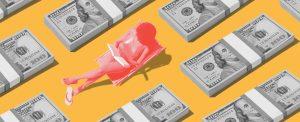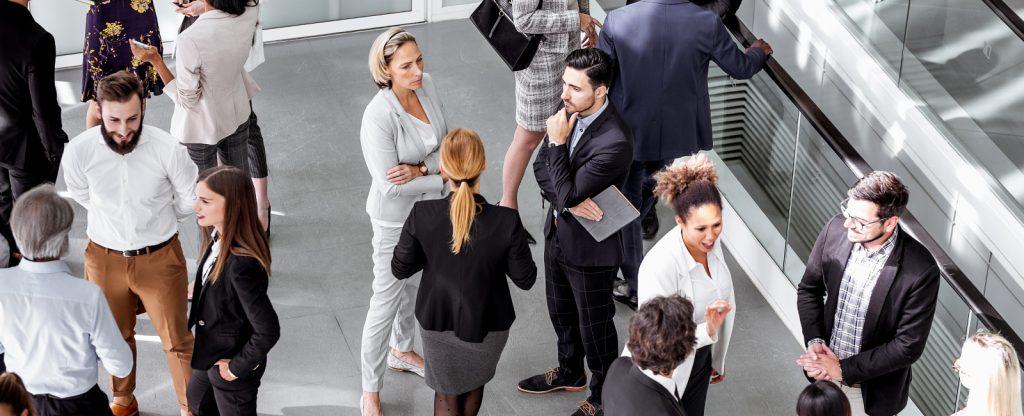Doctor. Lawyer. Academic. Author. Researcher. Dr. Marie Bismark is many things, but across it all, she is a passionate, articulate, and driven advocate of patient safety, mental health among health care workers, and complaints resolution. And as such an advocate, much of Dr. Bismark’s career has been in and around health care regulation. In addition to completing advanced training in psychiatry as an active clinician, Dr. Bismark currently leads the Law and Public Health unit at the Centre for Health Policy at Melbourne’s School of Population and Global Health.
Dr. Bismark joined Ascend Radio podcast host Paul Leavoy on a recent episode to talk about her research, which examines the intersection between clinician well-being, medical regulation, and patient safety. They began by exploring the mental well-being of health practitioners, the common features of sexual misconduct complaints in health care, and the effectiveness of regulatory interventions in cases of sexual misconduct. Picking up where they left off in Part 1, their conversation concluded with a discussion on the impacts of the COVID-19 pandemic on health care workers, Dr. Bismark’s own experience during the pandemic, and her recent book, “Experiences of Health Workers in the COVID-19 Pandemic: In Their Own Words.” This interview has been lightly edited for length and clarity.
Outside of sexual misconduct, what sort of key issues or future challenges do you consider among your top priorities?
Over the last year, a lot of my work has focused on the impact of the pandemic on health practitioners. What I’ve learned through that research is that many of the problems we’ve seen during the pandemic were pre-existing problems that were exacerbated by the pandemic. One health practitioner who responded to our survey said that the pandemic opened up all these pre-existing cracks and I think that that’s very true, that what we’ve seen is that many of the existing challenges in the health sector – such as overworked junior doctors, or underpaid nursing staff, or out-of-date information technology systems, or a failure to include primary care practitioners in health policy – those are all really longstanding problems within the health sector. But those cracks were opened wide by the pandemic to a point where we could no longer ignore them. So I think that the pandemic, in a way, has shone a very bright light on some of these longstanding problems in the way that we care for health practitioners and in the way that we regulate practitioners.
And on the note of the pandemic, you engaged in a study of frontline health care workers. Can you tell me about the genesis and intent of that study?
The frontline health care workers study was a large national survey conducted in Australia. It was led by Professor Karen Willis and Associate Professor Natasha Smallwood. And it really brought clinicians and researchers together to try and understand the impact of the pandemic on the psychological, social, and occupational well-being of health practitioners in Australia. We received responses from around 10,000 health practitioners. What we found in the survey is that there were very high rates of psychological distress among health practitioners during the pandemic. Well over half of the health practitioners who responded to our survey were reporting clinically significant levels of anxiety, depression, or burnout. Around one in 10 health practitioners reported that they’d had thoughts of self-harm or suicide during the pandemic, which is a worryingly high rate. But research overseas has shown that in other countries health practitioners were reporting similarly high rates of thoughts of suicide or self-harm during the pandemic.
It was interesting, one of the things that we asked health practitioners in the survey is what was helpful for them, and there was a very strong sense that what they needed was safer and more supportive working conditions. I think that many employers tried to respond to this distress during the pandemic by offering a new well-being app, or running a resilience course, or suggesting some lunchtime yoga, and many health practitioners perceived those interventions as quite tokenistic. What they said to us was that they needed adequate staffing; they needed appropriate personal protective equipment; they needed the ability to take time off when they were exhausted; they needed leaders to understand what conditions were like on the front line. They needed, so people not to be sitting at home recommending a resilience program or a well-being app, but actually to have a really good sense of what was happening on the floor of those hospitals.
What we found as well was that health practitioners, perhaps not surprisingly, are already a very resilient group, so there’s nothing wrong with the resilience of health care workers as such. As part of the survey, we assessed health workers’ resilience and it was higher than the general population, yet. But yet we were seeing these very high rates of anxiety, burnout, and depression.
Can you give us as idea of what characterizes resilience in a health care worker? How can you assess resilience?
I think that a lot of resilience is the capacity to respond to stressful situations and to be able to adapt and to persist under conditions of stress. There are standardized tools for assessing resilience that ask practitioners a number of questions to assess their resilience. We found that overall, the resilience scores among health practitioners were high, but nevertheless they were experiencing these very high levels of psychological distress.
Towards the end of the survey, you provided some free text boxes for people to qualitatively provide their experience, and I understand that has yielded some unexpected fruit for you?
So many of us have filled out surveys in the past and in many of those surveys there’s a final free text question. In our survey, the free text question was “Is there anything else you want to tell us?” Most people just skip over that question, and we certainly weren’t expecting very in-depth responses. But one of the most surprising findings from the survey was that many, many thousands of health practitioners chose to respond to this free text question, and in the end we received over 250,000 words of free-text responses where people shared their really heartfelt reflections on the pandemic, how it affected them and their families, how it impacted their sense of safety, the distress they experienced at work, and their hope for the future.
When we first started this survey, we had anticipated that many of the research publications would report our quantitative findings, so there would be statistical measures of rates of depression and burnout and anxiety. But as we read these free-text narratives, we realized that these were stories that people wanted told; that health practitioners living and working during the pandemic wanted to be heard. So what we decided to do was to gather these stories together into a book, which is called “In their Own Words.” And the book really is just that – it’s the stories of health practitioners working during the pandemic in their own words. We have just included these stories as health care workers have written them. We’ve organized them around themes, so there were different themes around the impact on health workers who were parents, or those who were caring for elderly relatives. There’s a chapter on leadership; a chapter on teams; a chapter on the different emotions that people experienced. But really it is the stories of frontline health care workers in their own words.
It must have been really relatable material for you to read through yourself, right?
It was actually a very cathartic process for me. I had worked in hospitals throughout the pandemic. I was in the emergency department providing mental health care. I was spending time in the intensive care unit and in the COVID wards providing psychiatry support and drug and addiction support to people who were infected with COVID. It’s been a really exhausting couple of years for me and at the time when I read all of these survey responses, I was spending two weeks in managed isolation. I had travelled from Australia to New Zealand so I had to spend two weeks in managed isolation at the border, having just come off a very exhausting year of providing health care during the COVID pandemic. And it was very moving for me to be in this managed isolation facility alone for two weeks – we were allowed outside to exercise for 30 minutes a day – just alone in this hotel room with these stories from thousands and thousands of health care workers. And I felt such a sense of gratitude to people who had shared these stories. It really helped to give voice to many of the emotions and experiences that I had been through, and I really hope that reading the book will offer that to other people as well. That it will give voice to what they’ve been through and really bear witness to those experiences.
You read literally thousands of responses, but does any one stand out?
Yeah, there are a few stories that really haunt me and I think about them often. One was from a nurse who was caring for patients who were dying of COVID. There were very strict restrictions on visitors in Australian hospitals so often she would be with a very ill or dying person holding up an iPad so that their families could say their last goodbyes, which was devastating and heartbreaking in itself, but at the same time her own mother was very ill in an aged care facility in another part of town. This nurse was facilitating these farewells for patients and at the same time she was not able to be with her own mother to support her during her illness. That’s one story that really stayed with me.
There was another story of a nurse who had a young baby who had returned to work after having her child to be able to support the frontline delivery of care during the COVID pandemic. She had been breastfeeding her baby and she said that because of all the personal protective equipment requirements, by the time she had put on all of her PPE and taken off all of her PPE, the breaks that she was allowed to take were just not long enough for her to express breast milk for her baby during those breaks, so she ended up losing her milk supply and having to wean her baby much sooner than she had anticipated.
[These are] incredible stories of sacrifice and personal grief and impact that we so rarely hear. I sometimes think back to the 1919 influenza pandemic and how extraordinary it would be for us to have the stories of nurses, and doctors, and cleaners, and midwives, and psychologists who had worked during that influenza pandemic, so I hope that these stories we have collated will really serve to be a witness to health care workers during this pandemic.
How was your own experience of the pandemic? How did you cope?
I think every health practitioner has their own story of the pandemic. I had a school-aged daughter who was homeschooling. We had the longest lockdown in the world here in Melbourne, so over 250 days when schools were closed; restaurants, gyms, public facilities were closed; mandatory mask wearing everywhere that you went. So I was working in the COVID wards and in the emergency department and I was also homeschooling a child, which many parents will be able to tell you was a challenging experience. Like many health care workers, I was separated from loved ones because of the border closures, so my husband, my older daughter, my oldest son, and my parents were all in New Zealand. So, for the better part of two years, I’ve been separated from my husband, my older children and my parents because of the border closures during the pandemic and I know that many other health care workers have had similar experiences.
One thing that we heard often during this survey was just the pervasiveness of the experience. You would be caring for COVID patients at work during the day; you’d get in the car and it would be on the news on the radio; you would come home and that’s what people would be talking about. So many facets of your life were impacted. You were both working in the disaster and you were living through it yourself as well.
Another common theme that we heard was that many health practitioners have very finely tuned coping mechanisms. They work in very stressful jobs and they have spent many years figuring out what they need to do to keep themselves well, whether that’s going to the gym, or playing team sports, or singing with a choir, or going to church on Sunday, or catching up with friends. Many health care workers, and other people as well, have these finely tuned coping mechanisms, and during the pandemic, many of those coping mechanisms were taken away. Health care workers were saying, “this is the most stressful working experience of my life and all of the things that I would usually do to stay well – like going to the gym or going for a swim or catching up with friends or singing in a choir – have all been taken away from me.” So I think that we really saw people having to find new ways to care for themselves and to care for people that they loved.
To hear the full conversation between Dr. Marie Bismark and Paul Leavoy, listen to this episode of the Ascend Radio podcast.
MORE INSIGHT

‘The people piece’: The key role of people in regulatory transformation
Regulatory transformation is not only about changing an organization’s technology and processes; it is also about empowering and engaging its people throughout the journey. In this article, Rick Borges looks at the key role that people play as enablers of regulatory transformation.

Playing in the sandbox: Old regulators are learning new tricks
Regulators are increasingly turning to an innovative policy tool called a “sandbox” to address various challenges. In this article, Contributor Will Morrison explores the origins of regulatory sandboxes and how they work.

Regulators tackle operational resilience in the UK
To mitigate the risk of major operational failures affecting the day-to-day lives of millions of financial services customers, U.K. regulators issued new rules on operational resilience that came into force in March 2022. In this article, Rick Borges looks at the requirements and the impact they will have on firms’ cyber resilience and use of third-party providers.

An exhaustive breakdown of interstate compacts in the U.S.
Just how many interstate licensing agreements are active in the U.S.? And in which professions are regulators looking to further promote license mobility? In our latest Ascend article, we take an in-depth look at the country’s largest active and pending multistate licensing agreements.

How the U.K.’s new Consumer Duty will change how firms operate
On July 31, the U.K.’s Financial Conduct Authority (FCA) will begin enforcing a new Consumer Duty that will set higher and clearer standards of consumer protection across financial services and require firms to put their customers’ needs first. In this article, Ascend Contributor Rick Borges explores the impact this change will have on how firms operate.

Cayton asks ChatGPT: Is AI a good thing or a bad thing?
Is AI a good thing or a bad thing? It’s a question that’s currently top of mind for lawmakers and citizens alike as the development of increasingly powerful AI technologies continues at a rapid pace. As Harry Cayton recently contemplated this question, he decided to ask ChatGPT to see what it had to say.








